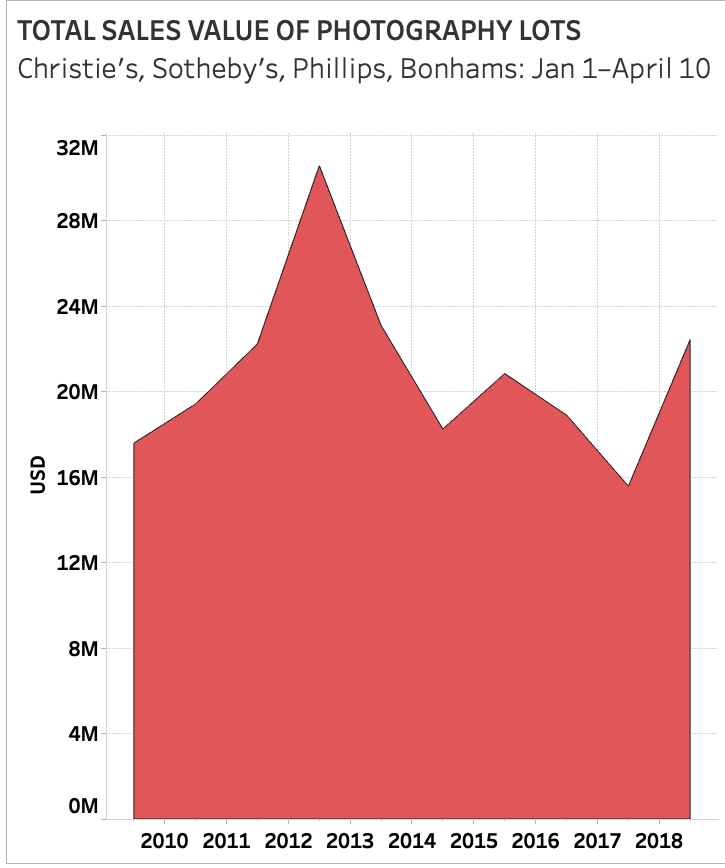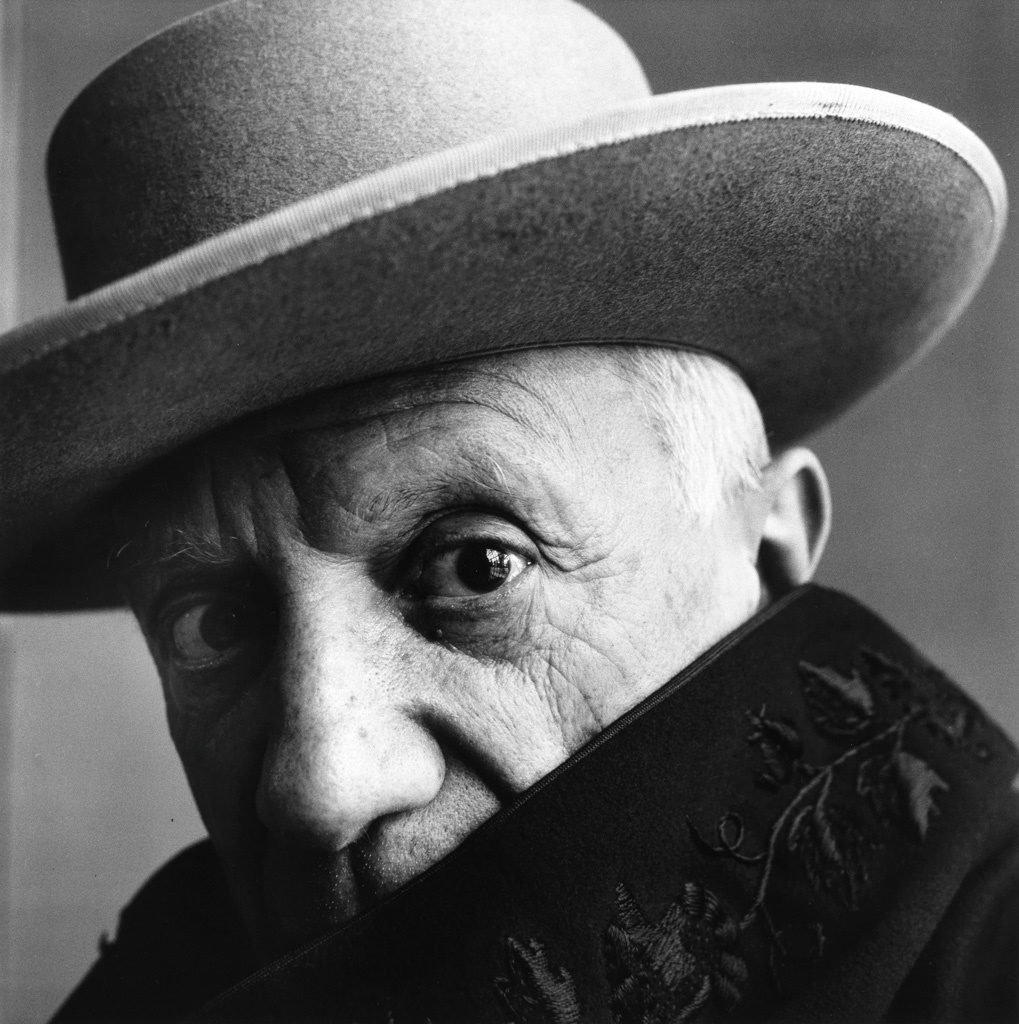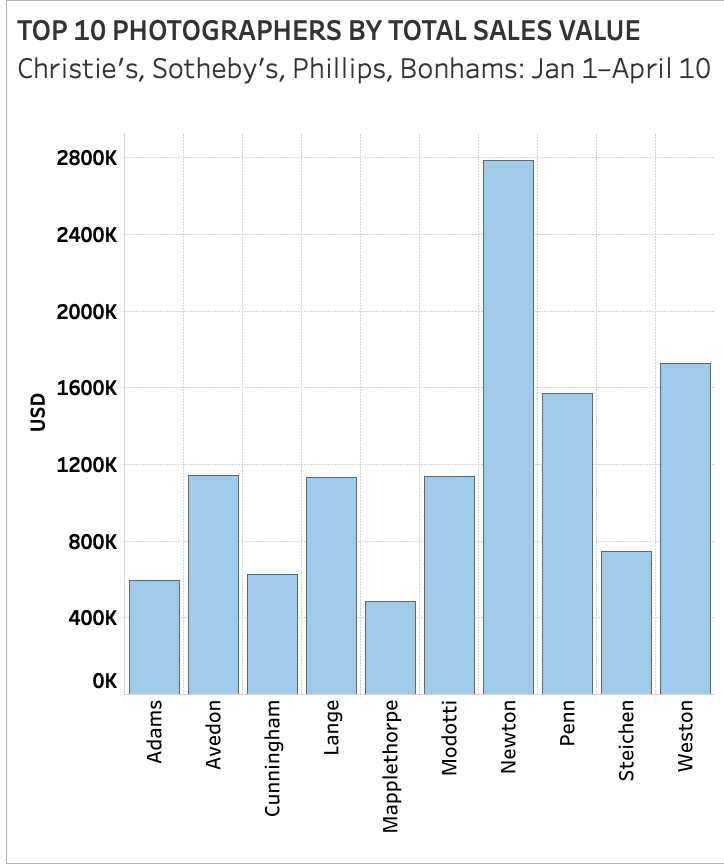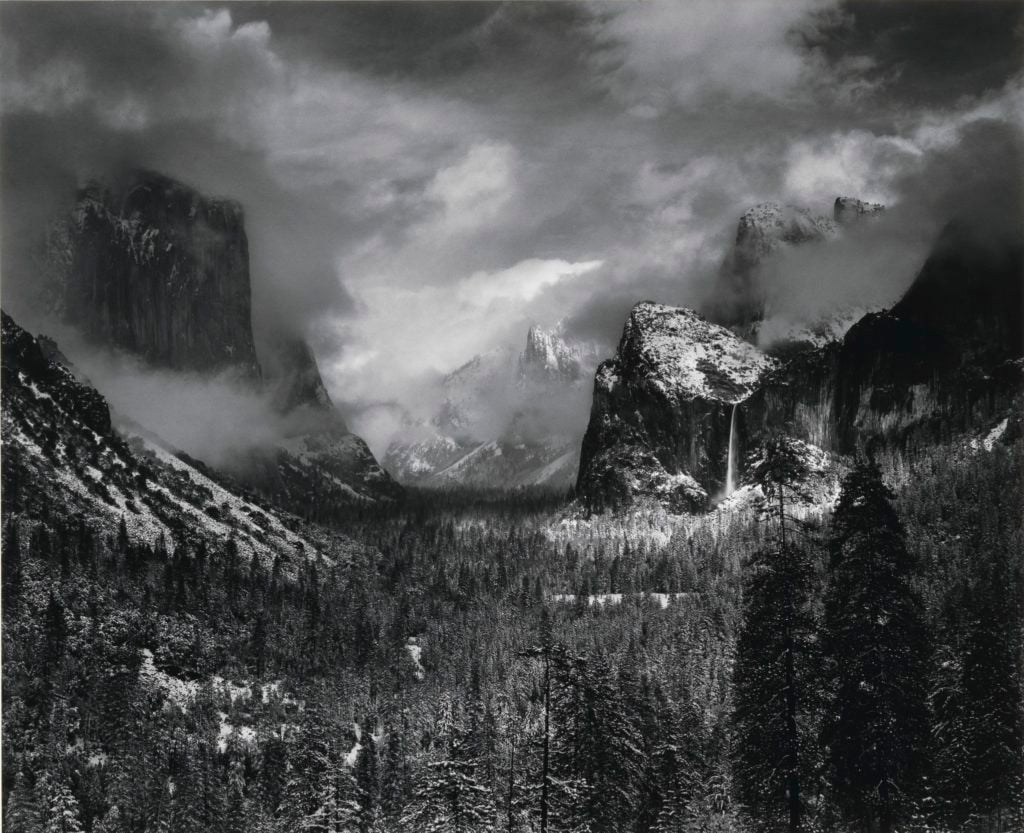While KAWS and Zao Wou-Ki’s dual $14.8 million sales in Hong Kong were monopolizing many auction observers’ attention in early April, a more specialized affair was taking place in New York.
There, houses including Christie’s, Sotheby’s, Phillips, and Bonhams hosted their annual spring photography sales. And while several buyers and sellers undoubtedly left happy, the post-sale press releases—if they arrived at all—were decidedly subdued, absent the typical hyperbole describing results as “triumphant” or “exceptional.”
To get a better sense of the genre’s overall status, we sifted through data on the past decade’s photography auctions worldwide. (2009 marked the first year of the major New York photo sales.) What emerged are three trends that will help collectors better understand the state of the shutter trade today and into the future.
Here’s the upshot: The photography market isn’t anywhere near as high-risk and high-reward as the contemporary art market. In fact, it’s a little sleepy. But for devotees of the medium, there are wise and fruitful bets to be made.
1. The auction market for photos has been stuck in gear for 10 years.

© artnet Price Database 2019.
Here’s the good news: Photography sales were up significantly in 2019, rebounding from a 10-year low of $15.6 million in 2018 to about $22.4 million this year.
Here’s the not-so-good news: Counter to annual trends in the wider fine-art auction market (which peaked in 2014, hollowed out in 2016, and has been climbing ever since), photography sales peaked early. They topped out in 2013 at $30.5 million—and have never gotten close to that high point again. At three other points over the past decade, the market has hit a ceiling at $23 million.
The number of sold lots has shown no major movement, either, suggesting that the average work is getting neither cheaper nor pricier. Almost exactly as many works changed hands during this year’s sample period as in 2016, 2013, and 2011: a little over 700. Together, these stats on total value and total volume suggest that the photography market is a relatively stagnant one that, barring a dramatic new influx of buyers, more or less found equilibrium a decade ago.
Takeaway: If you’re looking for big, quick gains in the art market, look away from photography. But if you believe the medium is due for long-term appreciation, it’s still a good time to get started (or double down).
2. The list of top photographers has been remarkably stable.

Irving Penn, Pablo Picasso, Cannes (1957, printed circa 1962). Courtesy Swann Galleries.
Unlike some genres, in which the top sellers shift dramatically year to year based on supply, photography has a pretty consistent all-star team. When examining the top 10 best-selling photographers during our sample period over the past decade, we found just 32 names (and a lot of repeats).
And if you’re a collector looking for safety, it’s reasonable to slim down the field even further. Of those 32 artists, 15 appeared on only one year’s list (likely due to a particularly strong example coming up for sale, good timing, or another one-off situation). That essentially leaves just 17 photographers who have a track record of appearing among the top 10 best-selling photographers.
Those names are: Irving Penn, Ansel Adams, Edward Weston, Robert Frank, Robert Mapplethorpe, Helmut Newton, Richard Avedon, Man Ray, Diane Arbus, László Moholy-Nagy, Edward Steichen, Alfred Stieglitz, William Eggleston, Hiroshi Sugimoto, Peter Beard, Cindy Sherman, and Paul Strand.
(You might notice some familiar names, such as Richard Prince and Andreas Gursky, missing—that’s because their work is far more often sold in contemporary art sales rather than photo sales, which are the subject of our analysis.)
Among this select group, however, it’s possible to provide even more security. Five artists proved their timelessness by making the list in six years or more, including our chronological bookends of 2010 and 2019: Ansel Adams (nine years), Irving Penn (nine years), Edward Weston (eight years), Robert Frank (seven years) and Robert Mapplethorpe (six years).
Takeaway: Although their prices may not skyrocket, a short list of photographers can be considered relatively safe stores of value going forward.
3. The photography market has shown little demand for gender balance.

© artnet Price Database 2019.
In a similar analysis last spring, data showed that it was still a man’s world at the top of the photography market. The same is true today, though there are signs that the winds may be shifting.
Of the 32 artists who made one or more annual top 10 list during the sample period, only seven were women. Furthermore, only two of those seven women made the list more than once: Cindy Sherman (whose work is also frequently sold in contemporary art sales, not included here) in two years, and Diane Arbus in five.
But three women photographers are among the sales leaders so far in 2019: Imogen Cunningham, the American photographer best known for her nudes; Dorothea Lange, the chronicler of the Great Depression; and Italian photographer and political activist Tina Modotti.
Time will tell if their momentum carries through the rest of the year. But if so, it could be a sign of change in the photography market—and perhaps one heralding that others could (finally) be just over the horizon.
Takeaway: Buy great women photographers, because they’re still historically undervalued.
Methodology: This article examines data for all fine-art sales that either contain “photograph” in the title or have a majority of lots classified as photography (including both live auctions and online auctions), held from January 1 through April 10 of the given year, from 2010 through 2019 at all worldwide locations of Christie’s, Sotheby’s, Phillips, and Bonhams. For artist rankings, we only considered individual artists, so disqualified portfolios that included work by multiple photographers. All sales values are denominated in US dollars and include buyer’s premiums. All data comes courtesy of the artnet Price Database and artnet Analytics Reports.









